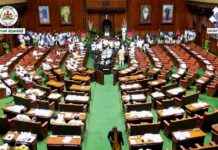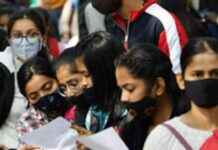Indian Time: Draft Legal Metrology Rules Released for Accuracy
New Delhi – In a groundbreaking development, the Indian government announced on Monday the release of draft Legal Metrology (Indian Standard Time) Rules for 2025. These rules aim to synchronize all Indian clocks with indigenous atomic clocks, ensuring a level of accuracy ranging from milliseconds to nanoseconds. The Department of Consumer Affairs (DoCA) spearheaded this initiative to bring uniformity and precision to timekeeping, ultimately leading to the vision of ‘One Nation, One Time.’
The Need for Precision
Currently, many software operating systems in India rely on US-based Network Time Protocol servers. This move towards synchronizing all software with indigenous atomic clocks is crucial for maintaining uniformity in time, especially during critical times such as wartime. Developed in collaboration with the National Physical Laboratory (NPL) and the Indian Space Research Organisation (ISRO), these draft rules aim to establish a regulatory framework for One Nation One Time.
Infrastructure and Alignment
The new framework will leverage advanced infrastructure, including five legal metrology laboratories spread across India, to align systems and networks with Indian Standard Time (IST). Legal metrology, which involves applying legal requirements to measurements and measuring instruments, will play a key role in this alignment process.
Implications and Benefits
Accurate timekeeping is essential for various sectors such as navigation, telecom, power grids, banking, and emerging technologies like artificial intelligence and the Internet of Things (IoT). By mandating the use of Indian time managed by NPL and the consumer affairs ministry’s Regional Reference Standard Laboratories, this initiative aims to enhance precision and streamline operations across different industries.
Government Action and Oversight
To oversee the adoption of these rules, a high-level committee was formed under the Legal Metrology Act, 2009. Chaired by the secretary of Consumer Affairs, this committee includes representatives from key organizations such as NPL, ISRO, IIT Kanpur, NIC, CERT-In, Sebi, and various government departments. Their efforts have led to the drafting of rules for adopting IST, setting guidelines for network synchronization, and developing frameworks for time-stamping, cybersecurity, and monitoring the progress of the IST project.
Looking Ahead
The new draft rules also include cybersecurity measures to prevent disruptions and allow exceptions for scientific, astronomical, and navigational purposes with government approval. Public comments on these rules are open until 14 February, and compliance will be monitored through regular audits with penalties for non-compliance.
In conclusion, the adoption of these rules is expected to revolutionize financial transactions, optimize industrial operations, and enhance the synchronization of national infrastructure and communication networks. This move towards precision in sectors like 5G technologies, power grids, and navigation systems is anticipated to drive technological integration and boost global competitiveness.
For more updates on business news, politics, and breaking events, stay tuned to Live Mint. Download TheMint News App for daily market updates and the latest news.


























